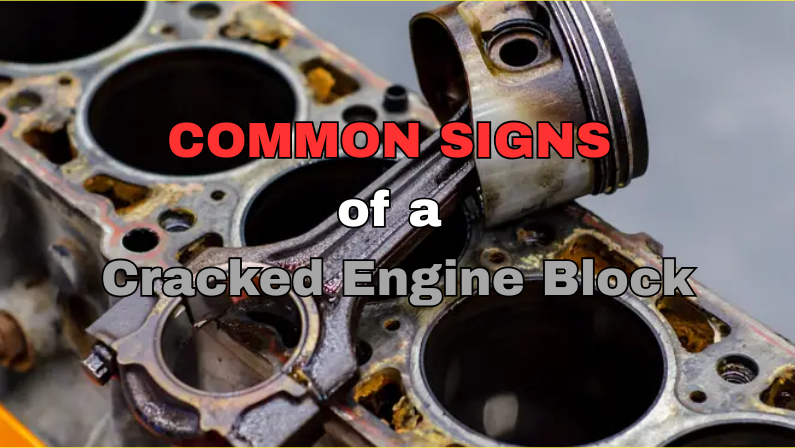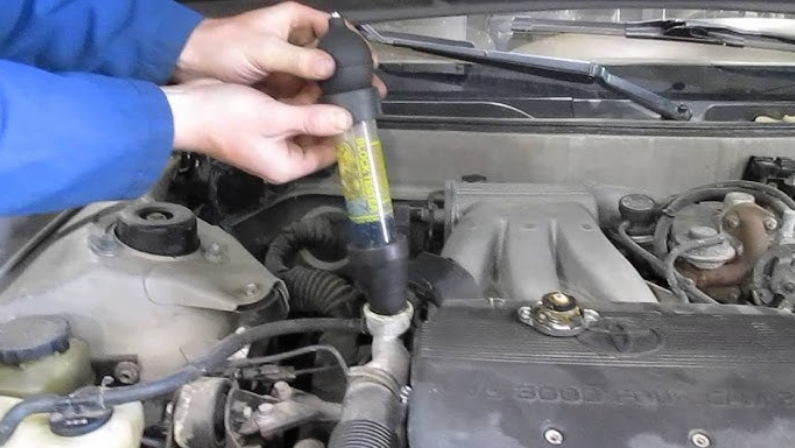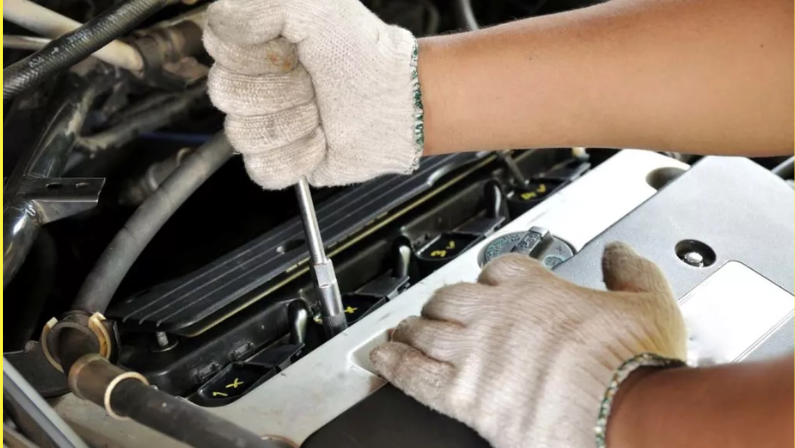Crack on Engine Block: What is it, Causes & How to Fix It
Posted on April 10, 2025

A cracked engine block is every car owner’s worst nightmare. Not only is it one of the most serious—and expensive—issues your vehicle can face, but it’s often mistaken for a blown head gasket or cracked cylinder head.
Recognizing the signs of a cracked engine block early—such as overheating, coolant leaks, and reduced performance—can save you from costly repairs down the road. But how do you know if your engine block is cracked?
In this post, we’ll explore what causes a cracked engine block, from extreme temperature fluctuations to neglect in maintenance, and discuss common symptoms. We’ll also answer critical questions like, "Can you fix a cracked engine block?" and "How can you tell if your engine block is cracked?"
By understanding what a cracked engine block and the warning signs are, you'll be better prepared to act quickly. Read on as we break down everything from how to fix engine block crack issues to exploring repair options that might just save your engine.

What is an Engine Block?
The engine block is the heart of your vehicle’s engine. Made from either aluminum or cast iron, it serves as the foundation for key components like the cylinder head, crankshaft, pistons, and connecting rods.
It’s designed with internal passages that allow coolant and oil to flow, helping to regulate temperature and lubrication while the engine runs.
Often called the “bottom end” of the engine, the block works in tandem with the cylinder head and other upper components—known as the “top end”—to create the controlled explosions that power your car.
A well-maintained engine block is essential for smooth performance, making it one of the most critical parts of your vehicle.

Types of Engine Block Cracks
A cracked engine block is a serious structural failure, often caused by overheating, mechanical stress, or material fatigue.
These cracks can vary in severity and location, falling into a few key types:
1. Internal Cracks
These occur within the engine's coolant or oil passages and are often hidden from view. While not always immediately noticeable, internal cracks can lead to coolant or oil leaks and, in severe cases, cause the two fluids to mix—leading to major engine damage.
2. External Cracks
Found on the outer surface of the engine block, these cracks are usually easier to spot and inspect. While they may start small, they can lead to coolant or oil leaks if left unchecked.
3. Hairline Cracks
These are extremely fine cracks that may not seem like a big issue at first. However, over time, they can grow and lead to more significant structural damage if not addressed.
Identifying the type of crack is the first step in determining the best repair method. Some cracks can be sealed or welded, while others may require more extensive repairs—or even a full engine replacement.

7 Common Signs of a Cracked Engine Block
A cracked engine block is a serious problem that can lead to major engine damage if left unchecked. While some symptoms can be mistaken for less severe issues, it’s important to recognize the warning signs early to prevent costly repairs—or even total engine failure.
Here are some of the most common indicators that your engine block may be cracked:
1. White Smoke (Steam) From the Exhaust Pipe
Coolant can leak into the engine’s cylinders through a crack in the block, where it burns along with fuel. This results in thick white smoke (actually steam) coming from the tailpipe, often accompanied by a sweet smell.
2. Coolant or Oil Leaks
If you notice coolant or oil pooling under your vehicle, a cracked engine block could be to blame. Depending on the crack’s location, leaks may be internal (harder to detect) or external (more visible).

3. Engine Overheating
A crack can cause coolant to leak, preventing the system from properly regulating the engine’s temperature. This can lead to persistent overheating, which may cause even more severe damage.
4. Rough Running and Misfiring
If a crack leads to a loss of compression, the engine may start running rough, misfiring, or even stalling. This is often accompanied by a noticeable drop in performance.
5. Combustion Gases in the Cooling System
A cracked block can allow combustion gases to seep into the cooling system, causing excessive bubbling in the coolant or putting the system under extreme pressure.
6. Coolant-Oil Intermix
When a crack forms between the block’s oil and coolant passages, the two fluids can mix, leading to a milky, sludge-like appearance in the oil—an indication of severe engine trouble.

7. Illuminated Warning Lights
A cracked block can trigger various dashboard warning lights, including the check engine light, low coolant level light, or engine temperature warning. If your car has a temperature gauge, you may also notice it rising rapidly.
If you experience any of these signs, it’s crucial to diagnose the issue as soon as possible. Ignoring a cracked engine block can lead to catastrophic engine failure, so addressing the problem early can save you from a costly replacement.

7 Common Causes of a Cracked Engine Block
Understanding the causes can help you prevent costly repairs down the road. Here are the most common reasons an engine block may crack:
1. Overheating
Excessive heat is one of the leading causes of a cracked engine block. When an engine overheats, the metal expands, and if temperatures rise too high, the block can warp or develop cracks. This is often due to coolant leaks, a malfunctioning thermostat, or a clogged radiator.
2. Freeze Damage
If coolant isn’t properly mixed with antifreeze, it can freeze in cold temperatures, expanding inside the engine block. This expansion creates intense pressure, which can lead to cracks. That’s why it’s essential to use the right coolant mixture, especially in colder climates.

3. Material Defects
Sometimes, the problem starts at the manufacturing stage. If an engine block has casting flaws, impurities, or weak points in the metal, it may develop cracks over time, even under normal driving conditions.
4. Stress and Vibration
Engines experience constant vibration and stress, especially in high-performance or heavy-duty vehicles. Over time, this can weaken the engine block and lead to cracking, especially if motor mounts are worn or improperly installed.

5. Poor Maintenance
Neglecting routine maintenance—such as oil changes, coolant flushes, and regular inspections—can lead to sludge buildup, overheating, and other conditions that weaken the engine block. Regular maintenance is key to keeping your engine in good shape.
6. Water Pump Failure
The water pump is responsible for circulating coolant through the engine to maintain optimal temperature. If it fails, coolant can’t flow properly, leading to overheating and potential cracking. Early signs of water pump failure include leaks, whining noises, and fluctuating engine temperatures.

7. Low Coolant
Coolant helps regulate engine temperature, and running with low coolant levels can cause hotspots within the engine. Without enough coolant, certain areas of the block may overheat and develop cracks. Always check coolant levels regularly to avoid this risk.
By staying on top of maintenance and addressing issues early, you can reduce the chances of a cracked engine block and extend the life of your vehicle.

How to Diagnose a Cracked Engine Block
While some cracks are visible, others require specialized tests to detect internal damage.
Here are the most effective methods for diagnosing a cracked engine block:

1. Visual Inspection
In some cases, cracks that cause external oil or coolant leaks can be spotted with a simple visual inspection. Look for signs of leakage around the block, particularly near the freeze plugs, cylinder heads, and main seals.
2. Cooling System Pressure Test
If you suspect a coolant leak, a cooling system pressure test can help pinpoint the source. This test involves pressurizing the cooling system with a dedicated pressure tester to check for external leaks. If pressure drops without any visible leaks, there may be an internal crack.

3. Block Tester
A block tester, also known as a combustion leak tester, can detect internal cracks. The tool is placed over the cooling system filler neck and uses a special fluid that changes color if combustion gases are present.
If the fluid reacts, it indicates a possible cracked engine block, cracked cylinder head, or blown head gasket.
4. Compression Test
A compression test measures the pressure inside each cylinder to determine if there is a loss of compression.
If a cracked engine block is allowing air or combustion gases to escape, one or more cylinders will have lower compression than normal. Significant variations in compression levels across cylinders can indicate internal damage.
5. Coolant and Oil Analysis
A cracked engine block can cause coolant and oil to mix, leading to a milky or frothy appearance in the oil. A lab analysis of coolant and oil samples can detect the presence of contaminants, such as combustion gases in the coolant or coolant in the oil—both of which point to a cracked block.

6. Thermal Imaging
Advanced thermal imaging cameras can detect temperature variations across the engine block. A crack may create an abnormal hot or cold spot due to leaks or inefficient cooling. This method provides a non-invasive way to identify internal damage before performing a teardown.

How to Fix an Engine Block Crack
Below are the most common ways to repair a cracked engine block:
1. Metal Stitching
Metal stitching involves using metal pins or keys to seal a crack without applying heat. This method is commonly used for cold repairs and is ideal for cases where welding might introduce additional stress or warping.
2. Epoxy Sealing
For smaller cracks, epoxy sealants can be an effective and cost-efficient solution. These chemical sealants bond to the metal, sealing the crack and preventing further leakage. While not suitable for high-stress areas, epoxy sealing can extend the life of an engine block with minor damage.

3. Welding
For more serious cracks, welding is a common repair method. This technique requires preheating and post-heating the block to ensure the weld properly bonds with the material while minimizing stress. Proper welding techniques are essential to avoid further weakening the block.
4. Brazing
Brazing is another repair technique that uses a filler metal with a lower melting point than the engine block. This method is effective for cracks in high-stress areas and provides a strong, durable bond.
5. Engine Block Replacement
In severe cases where the damage is extensive, replacing the engine block may be the only viable solution. While costly, a replacement ensures long-term reliability and prevents ongoing issues caused by an unrepaired crack.

Step-by-Step Repair Process
Fixing a cracked engine block requires precision and careful execution. Follow these steps to ensure a successful repair:
1. Prepare the Engine
Drain all engine fluids, including coolant and oil. If necessary, unbolt the engine from the vehicle for better access to the damaged area.
2. Clean the Area
Thoroughly clean the cracked section using water and a degreaser to remove oil, dirt, and debris. A clean surface ensures better adhesion for any repair method used.

3. Inspect the Crack
Use advanced crack detection techniques such as dye penetrant inspection, magnetic particle testing, or thermal imaging to assess the severity and location of the damage.
4. Choose the Repair Method
Determine whether a cold repair (metal stitching, epoxy sealing) or a hot repair (welding, brazing) is the best approach based on the crack's size and location.

5. Perform the Repair
Execute the chosen repair method carefully, following the necessary steps to ensure a strong and lasting fix. Proper application and adhesion are critical to preventing future issues.
6. Test the Repair
After the repair is complete, conduct a pressure test or run the engine to check for leaks, proper function, and overall durability before reassembling the vehicle.
For optimal results and peace of mind, it's always best to consult or bring your car to the experts. At CarHub North York Chrysler, our skilled technicians have the experience and state-of-the-art equipment needed to accurately diagnose and repair a cracked engine block. Trust us for reliable service and expert care every time.

How to Prevent a Cracked Engine Block
To avoid costly repairs and extend the life of your engine, follow these key preventive measures:
1. Stay on Top of Regular Maintenance
Follow a consistent maintenance schedule, including timely oil changes, coolant flushes, and inspections of critical engine components. Routine upkeep keeps your engine running smoothly and helps detect potential issues early.

2. Monitor Engine Temperature
Prevent overheating by ensuring your cooling system is in peak condition. Regularly check the radiator, thermostat, and water pump, and top up coolant levels as needed. If your temperature gauge rises abnormally, address the issue immediately.
3. Use High-Quality Fluids
Always use premium-grade engine oil and coolant recommended by your vehicle’s manufacturer. High-quality fluids enhance engine performance, reduce wear, and provide better protection against extreme temperatures.

Protect Your Engine Block and Save on Repairs
A cracked engine block can be a serious and costly issue, but with the right knowledge, you can spot the signs early and take proactive measures before it leads to major problems.
Whether it’s a minor hairline crack or a more extensive structural failure, understanding what causes a cracked engine block and recognizing the warning signs can save you both time and money.
At CarHub North York Chrysler, we’re not just your trusted used car dealership—we’re also a full-service center dedicated to keeping your vehicle in peak condition. Our technicians are on hand to diagnose issues like cracked engine blocks, offer expert repair solutions, and provide ongoing maintenance to help prevent future problems.
For more expert car care tips, maintenance advice, and repair guides, be sure to check out our Blog page—your go-to resource for everything automotive. Protect your engine and your investment by staying informed and acting early.

